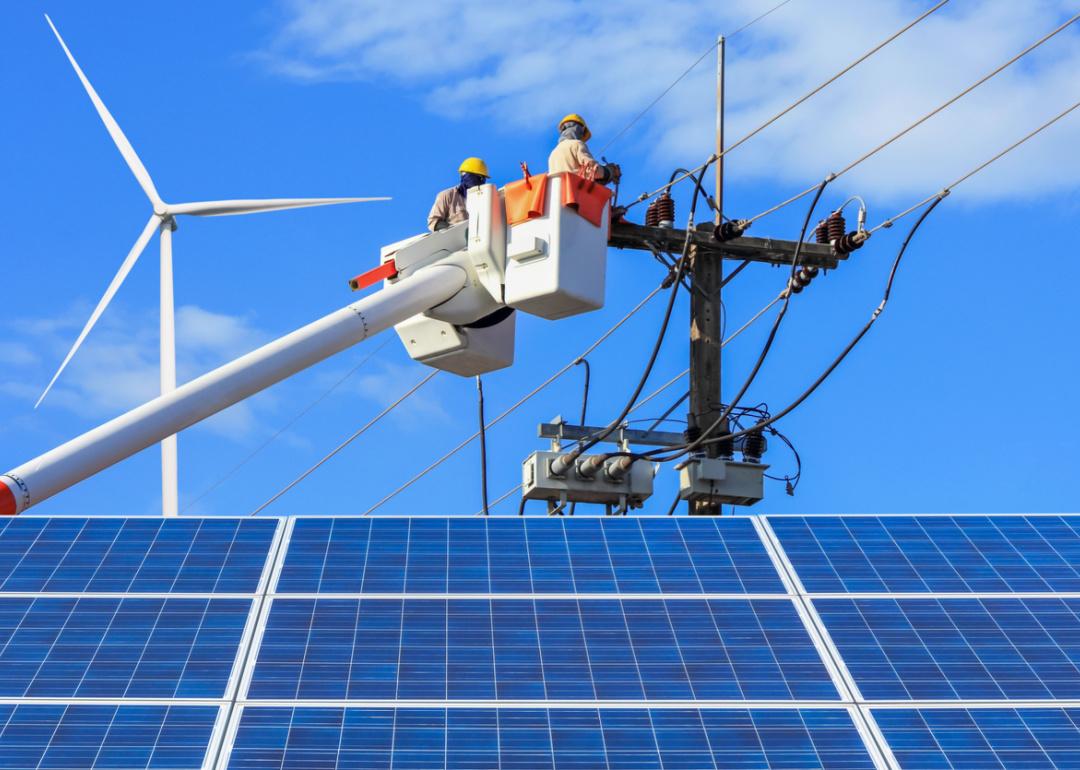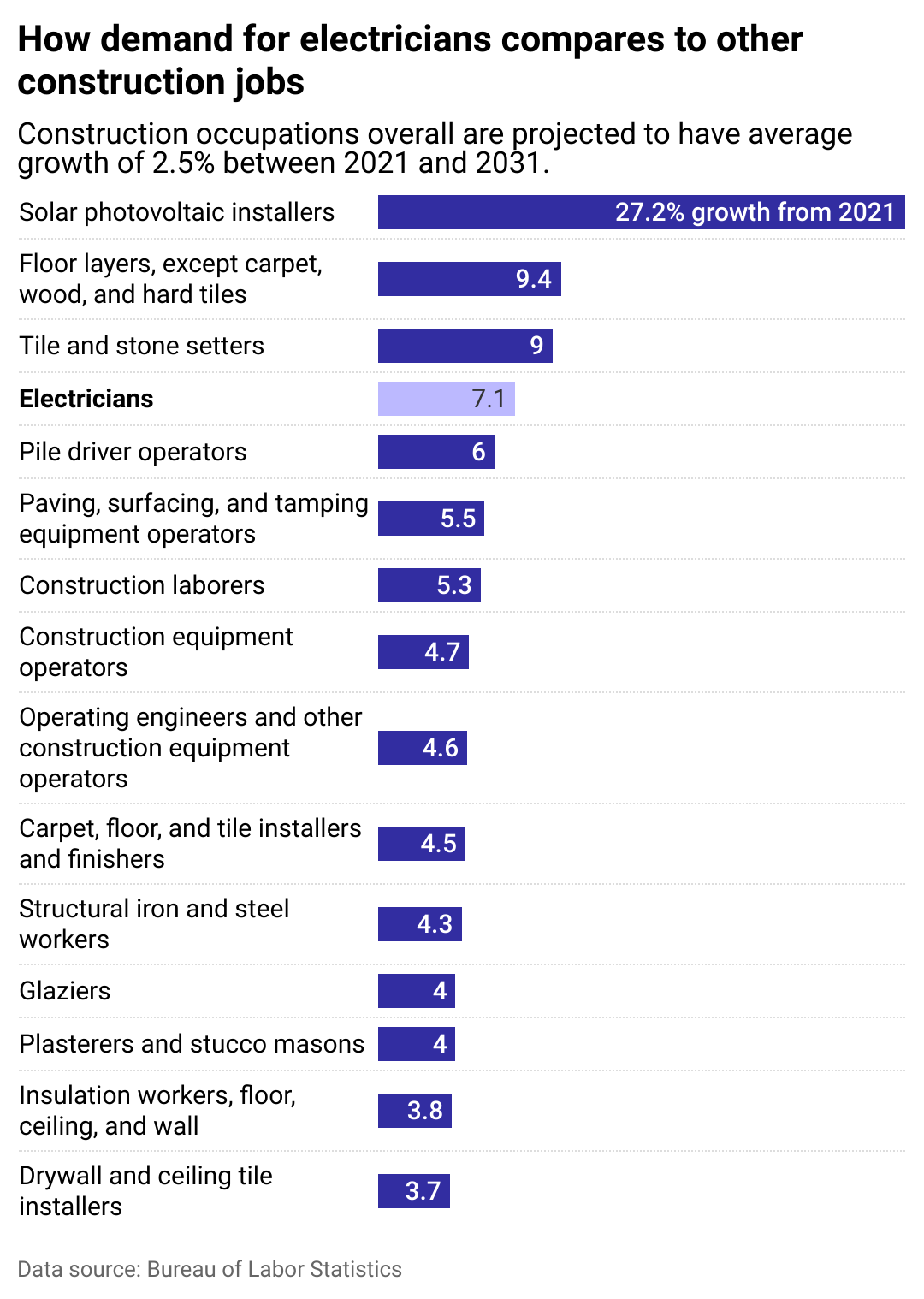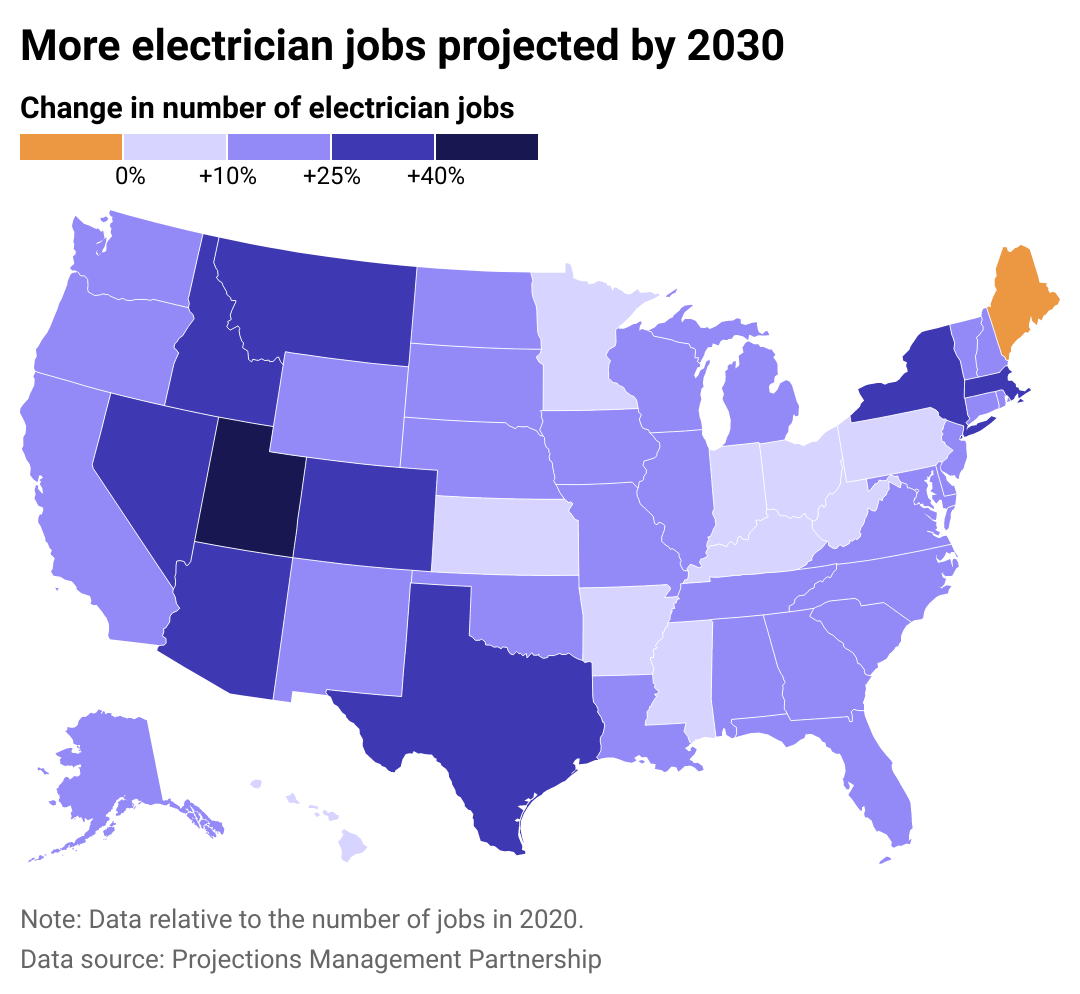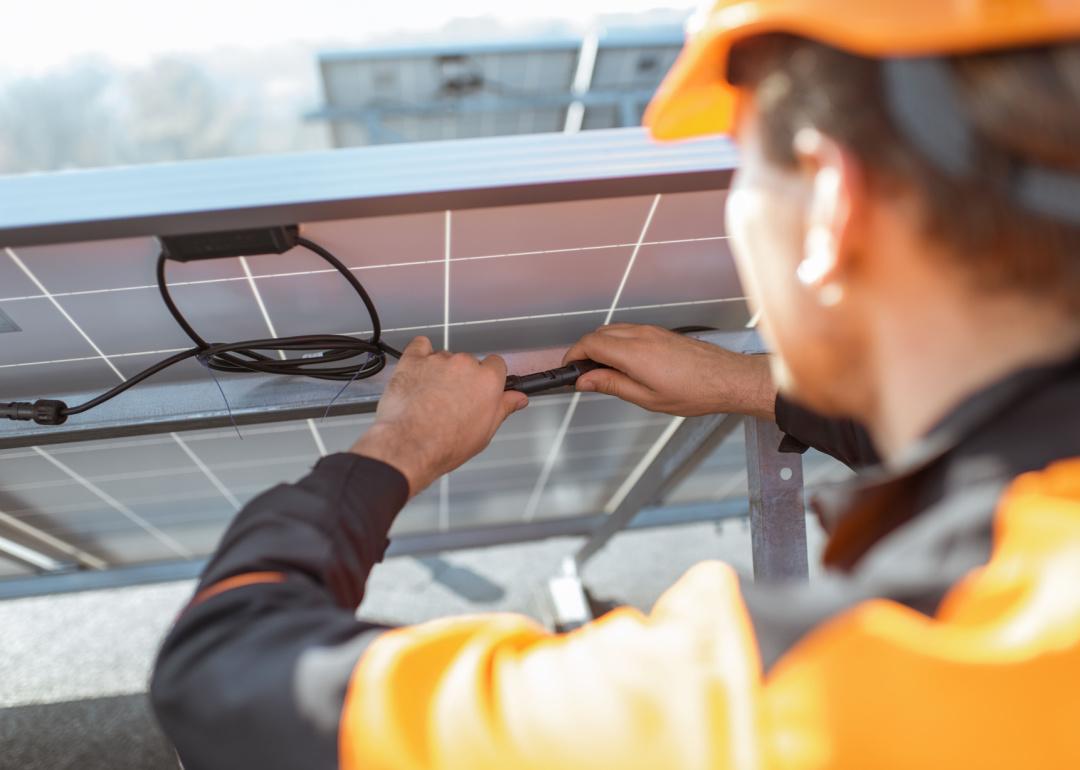
Green infrastructure means a heavier reliance on electricity, but does the US have enough electricians?
This story originally appeared on LED Lighting Supply and was produced and distributed in partnership with Stacker Studio.
Green infrastructure means a heavier reliance on electricity, but does the US have enough electricians?
The systems that are projected to ease our reliance on fossil fuels and minimize global carbon emissions overwhelmingly do so by using electricity over gas. Solar panels, electric vehicles, and clean energy appliances all depend on electric systems with the capacity to power them.
But while demand for these systems is growing, there is a nationwide shortage of electricians qualified to install and upgrade them. Nearly 1 billion machines—including space and water heaters, clothes dryers, and kitchen appliances—will have to be replaced over the next 25 years with electric alternatives in order to eliminate household CO2 emissions. This will require around 800,000 electricians, but interest among young people in joining the trade is waning.
General electricians are responsible for a variety of design, implementation, and upgrade tasks, including planning the placement of wiring and tubing; ensuring that systems meet safety codes; installing systems; and testing and maintaining them.
To encourage and assist aspiring electricians, many pieces of infrastructure legislation have been passed. The most wide-reaching of these is the Inflation Reduction Act, signed by the Biden administration last August. Under the act, individuals and families are offered enticing tax rebates for installing solar panels or purchasing electric vehicles, increasing the demand for electricians specializing in these systems. The act also provides funds for electrician contractors to pay, and thus take on, more trainees.
LED Lighting Supply cited data from the Bureau of Labor Statistics and the Projections Managing Partnership to look at how the number of electrician jobs in the U.S. is expected to grow amid the increasing growth of green infrastructure.

Electrician jobs are projected to be among the fastest growing in construction
The Bureau of Labor Statistics estimates that over 50,000 electrician jobs will be added over the next decade, growing from 711,000 to 761,000. Many of these openings are expected to come either from current electricians switching to new occupations or retiring.
The need for electricians who specialize in green infrastructure installation will also likely grow, creating new jobs in the field. For instance, the majority of the 9% spike in jobs in the solar energy industry that happened in 2021 was in the installation of solar panels. Additionally, the need for electricians to install charging stations for electric vehicles is also expected to increase as more electric cars are sold in the coming years.

Some states will see greater growth than others
Many homeowners are seeking electricians to install solar energy panels, help them switch from gas appliances to electric ones, and install electric vehicle charging stations (especially in the case of multi-residence buildings). Demand is high: Nationwide, around 60-70% of homes will need to be rewired and upgraded to be able to accommodate the shift into "going electric."
However, some states will have a higher need for electricians than others. For instance, California already has the highest number of solar-powered residences in the country and around seven times more solar jobs than other top solar-employing states like Florida and Massachusetts, meaning that demand is largely being met. In similarly sunny states—such as Texas, Arizona, and Nevada, where growth in solar power has very high potential—the number of residents seeking to electrify their homes is likely to grow exponentially, heightening the need for electricians.

What it takes to become an electrician
The requirements vary state by state, but generally, most aspiring electricians must graduate from a technical school, complete a four- or five-year apprenticeship, and pass an exam to obtain a license. Those hoping to specialize in installing and upgrading green infrastructure often need to complete solar-specific courses and training.
To fill the gap in qualified workers, many states are implementing programs to attract and assist students and apprentices to become electricians. For instance, the Inflation Reduction Act requires that solar energy companies receiving a tax break open up a certain number of positions for apprentices by 2024. The program also provides funds that could incentivize contractors to take on more trainees in energy efficiency.
State-specific initiatives are also in the offing—TECH Clean California, for example, has dedicated a portion of its nearly $120 million funding block to training contractors in electric heat pump installation and increasing collaboration between electric training providers.



